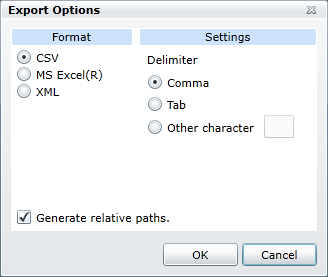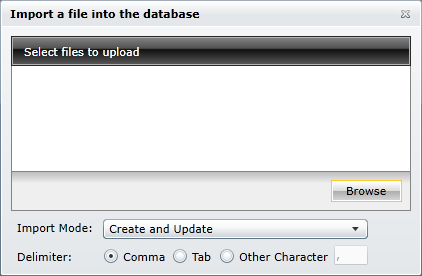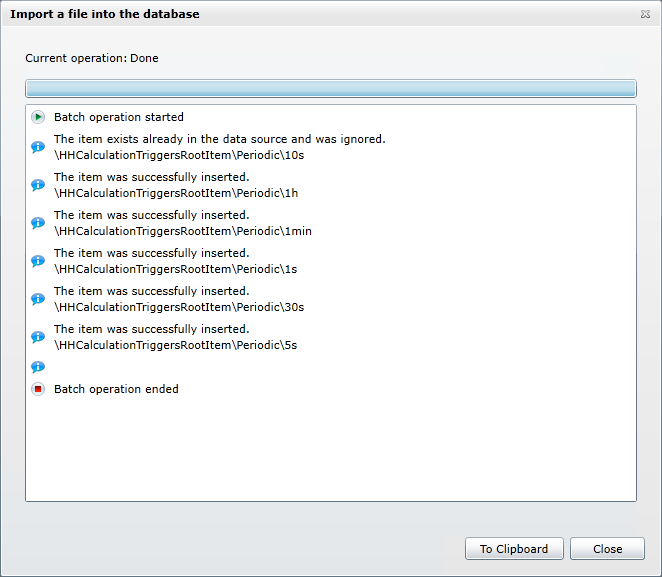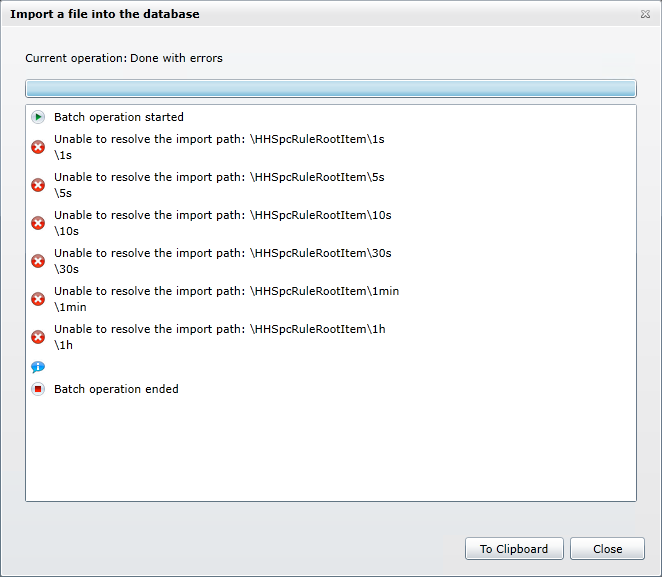You can export configuration data from Hyper Historian and store it in an XML file, a CSV file, or an Excel Workbook. Once exported, the configuration data can be used for any number of purposes, including storing backups of the configuration database and importing configuration information into other Hyper Historian configurations. You may want to export data simply to see its format for creating your own import files.
|
|
Note: Configuration data exported from the 'Classic' Hyper Historian component is meant for later import into the same component. Configuration data exported from the 'Classic' Hyper Historian component cannot be imported into the Hyper Historian provider contained in the Workbench, the Microsoft Silverlight-compatible tool. |
You can import and export the following Hyper Historian configurations:
Configuration database
Data Collections, a Logging Group, a Collector Group, an Aggregation folder, a folder of Hyper Historian tags
Loggers
Node Setup and Redundancy
System Administration
Calculation Triggers, a folder of calculation triggers
The remainder of this file explains exporting and importing Hyper Historian configuration data.
To Export Hyper Historian Configuration Data:
In Hyper Historian, expand the navigation tree and select the folder whose content you want to export.
Right-click the folder and select Export. Or click the Export button on the ribbon's Home tab. This opens the Export Options dialog box, as shown below:
Export Options for Hyper Historian

Choose the Format you want to export to. You can choose a CSV file, a MS Excel (R) (Excel Workbook) file, or an XML file.
Choose any Settings that are offered for the format.
Enable the Generate Relative paths check box if it is important to maintain the relative paths of items in the exported file.
Click OK. The Export Items (or Export Subitems) dialog appears. This dialog tells you the export's progress and displays a message when the export is complete. After clicking the Close button, a message appears indicating the location where the file was saved and the file name itself. You can click the file path to open the file and make sure that it contains the information you wished to export.
To Import Hyper Historian Configuration Data:
In Hyper Historian, expand the navigation tree and select the folder into which you want to import a file of Hyper Historian configuration data. Make sure you select a location that is compatible with the type of data being imported. For example, you don't want to select a Hyper Historian tag folder if you importing aggregates. Doing so will result in a failed import.
Right-click the folder and select Import. Or click the Import button on the ribbon's Home tab. This opens the Import dialog box.
Import Data into Hyper Historian

Click the Browse button to find the file you wish to import. You can choose an XML file, a CSV file, or an XLSX (Microsoft Excel workbook) file.
Choose any Settings that are offered for the format. If you are importing a CSV file, you must specify the delimiter character in the Settings section.
In the Import Mode drop-down list, select the type of import you wish to complete. If you want to add only new items (that are currently not in the configuration), select the Only Create new items option. If you would like to update only the items that are already in the current configuration, select Only Update old items. Otherwise, select Create and Update to add new items to the configuration and update any existing items.
Click Upload to begin the importing process.
A dialog box tells you the import's progress and gives you a message when the import is complete. Below are examples of a two imports: one that was successful, and another in which the user tried to import a file of System Setting into an incompatible file of Hyper Historian tags.
A Successful Import

An Incompatible Import will Result in Failure

See also:
Importing Historical Data from CSV Files